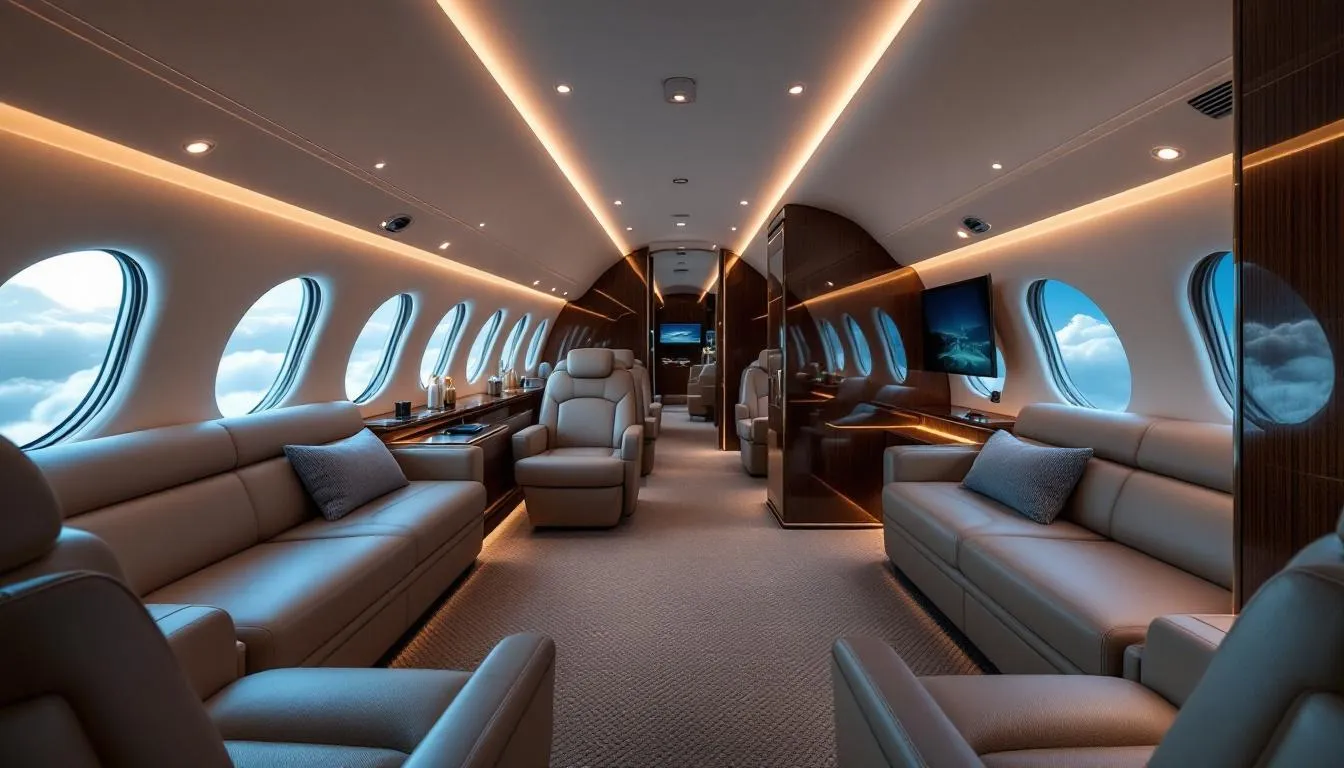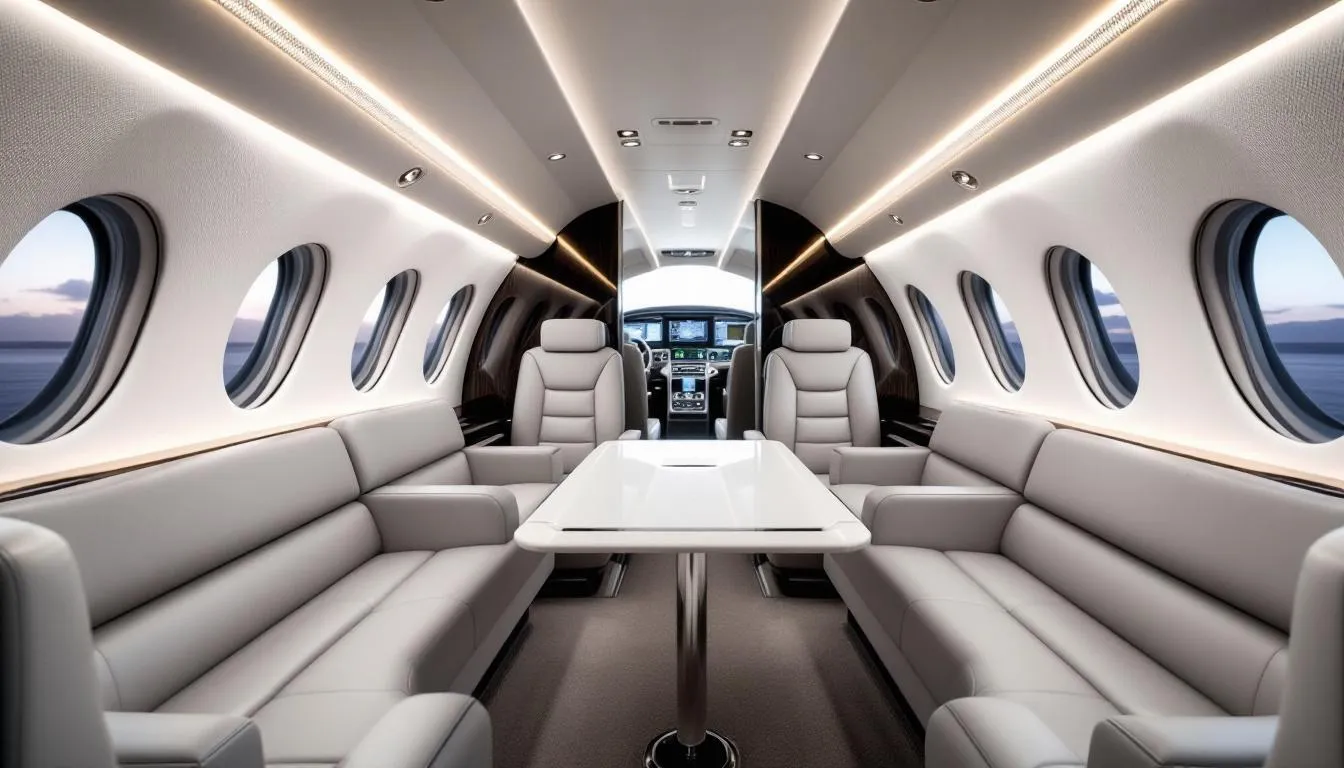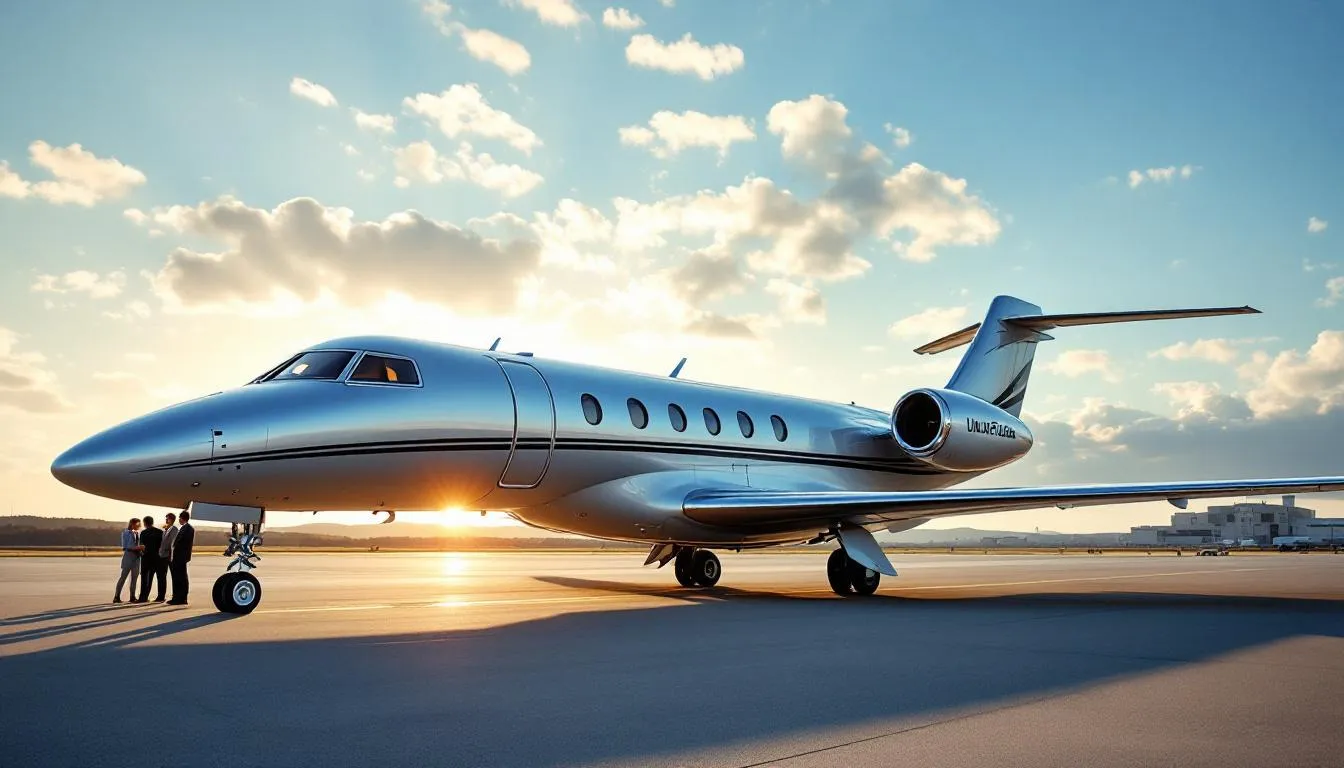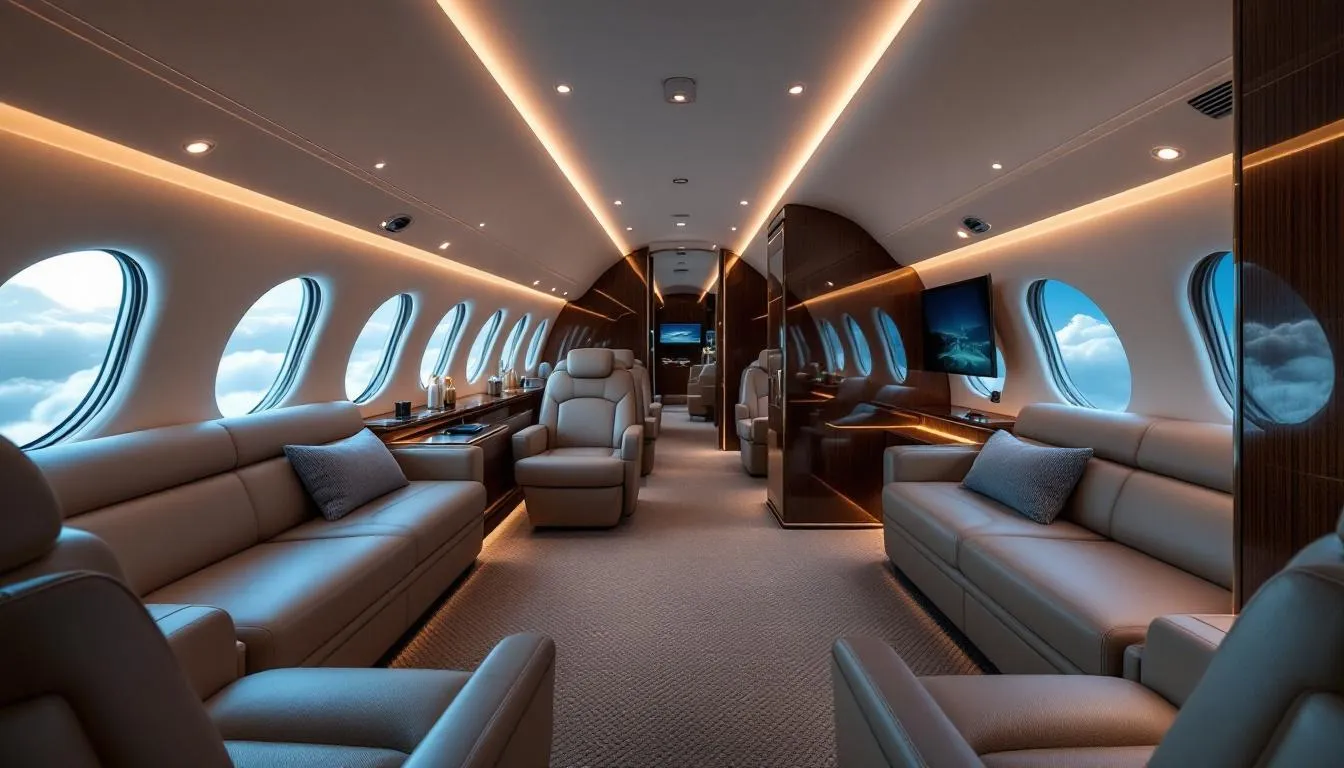
Private jets represent the pinnacle of convenience, efficiency, and privacy in modern air travel. Unlike commercial flights that are restricted to roughly 500 airports in the United States, private aviation provides access to over 5,000 airports nationwide and thousands more around the world. This expansive reach allows travelers to fly closer to their destinations, reduce travel time, and avoid crowded terminals and lengthy security lines.
Within the private aviation industry, there are multiple ways to fly privately, each designed to meet different travel frequencies, budgets, and preferences. The most common include private jet charter, fractional jet ownership, and full private jet ownership. A fractional ownership program involves three main cost components: upfront capital fee, monthly management fee, and occupied hourly fee.
For business leaders and high-net-worth individuals, private aviation isn’t just about luxury; it’s about time efficiency, flexibility, and control. The growing popularity of private jet timeshares or fractional ownership programs offers a way to enjoy these benefits without the steep financial commitment of full ownership. Whether flying on a very light jet for quick regional trips or an ultra-long-range jet for transcontinental travel, today’s travelers have more access and flexibility than ever before.
Private Jet Ownership
Owning a private jet is the ultimate expression of autonomy and freedom in air travel, but it comes with substantial financial responsibilities. Aircraft ownership means taking on the full operational responsibilities and costs associated with owning an entire aircraft, as opposed to fractional ownership. Full ownership of a private jet has purchase prices from around $2 million to over $110 million, with ongoing annual expenses of $500,000 to over $1 million.
These costs are categorized as both fixed and variable expenses: fixed expenses like insurance and hangar fees remain constant, while variable expenses such as fuel and maintenance fluctuate with usage. The purchase price for full ownership of a private jet ranges from $2 million to over $110 million, with annual operating expenses from $700,000 to over $4 million. All of these costs are ultimately borne by the aircraft owner.
Annual expenses for private jet owners typically include:
A management company can be hired by the aircraft owner to handle day-to-day operations, maintenance, and crew management, helping to streamline the complexities of private jet ownership. Operating costs, which include fuel, maintenance, and crewing, are a significant part of the ongoing financial responsibility. Regular expenses for private jet ownership include maintenance checks and fuel costs. Understanding the distinction between fixed and variable expenses is crucial for effective budgeting and cost management in private aviation.
The True Cost of Ownership
A new private jet can range anywhere from $2 million to over $100 million, depending on the model, age, and features. For those considering a more economical option, used private jets typically start around $200,000 and can go up to $15 million. Beyond the purchase price, owners must budget for recurring annual costs such as:
Maintenance and inspections: $300,000–$800,000 per year
Fuel and crew salaries: $200,000–$400,000 per year
Hangar fees and insurance: $100,000+ per year
It's crucial to consider the actual cost of ownership, which includes not only these visible expenses but also hidden fees and ongoing operational costs. Understanding the total costs involved helps potential buyers make informed decisions and plan their budgets effectively.
In total, the total costs of private jet ownership can easily exceed $500,000 to $1 million annually, even before factoring in depreciation or financing costs. Buying a private jet involves significant ongoing costs, including maintenance, fuel, crew salaries, and insurance, which can total $500,000 to $1 million annually.
Additionally, flight cost can vary significantly depending on how often the jet is used, the type of aircraft, and operational factors such as route and additional service fees. Billable flight time includes positioning time, airborne time, and a standard two-hour per day minimum charge. These factors collectively influence the overall cost of private jet travel.
The Advantages of Full Ownership
Despite the costs, private jet ownership offers complete control over flight schedules, routes, and aircraft customization. Owners can select a specific aircraft model tailored to their travel needs, emphasizing the importance of choosing the right one for comfort, range, and capacity. The choice of aircraft class (light, midsize, large-cabin) is the most significant cost driver in private jet ownership and fractional programs. There are several aircraft categories available to owners, such as light jets, midsize jets, and large jets. For those who require more space or plan long-distance or group travel, larger jets offer premium features, extended range, and are ideal for intercontinental flights. Additionally, owners with multiple aircraft may build or maintain their own fleet to suit varying mission profiles and passenger requirements.
However, for individuals who only fly a few times per month or prefer to avoid the operational responsibilities, fractional ownership or jet card programs often provide a more practical alternative.
Fractional Ownership
Fractional jet ownership, sometimes referred to as a private jet timeshare, bridges the gap between full ownership and on-demand chartering. It allows multiple owners to share the cost, access, and maintenance of a specific aircraft. Compared to full ownership, fractional ownership offers lower upfront costs, making private jet access more attainable for many buyers. A pre-purchase inspection is essential prior to buying a used jet to understand potential costs for upgrades and maintenance.
However, it's important to consider the ongoing fractional jet ownership costs, which include initial investments, operating expenses, and variable charges based on usage and aircraft type. Private jet timeshare programs, including jet cards and fractional ownership, have significant upfront costs ranging from approximately $35,000 to over $1 million.

Selling a fractional share can be complex due to the structured lease agreements governing these arrangements. Fractional jet ownership is typically managed by a third-party provider responsible for scheduling flights and maintenance. The costs range significantly depending on the size of the ownership share and the type of aircraft selected. Fractional jet ownership agreements are often structured as leases, allowing for more flexibility in choosing aircraft types. Private jets lose value over time, making used jets a more economical purchase if you're willing to upgrade older systems.
How Fractional Jet Ownership Works
When purchasing a fractional share, individuals buy a portion of a jet, say 1/8 or 1/16 ownership, entitling them to a fixed number of flight hours per year. Fractional ownership is an alternative to owning an entire aircraft, allowing participants to share the rights and responsibilities of an aircraft owner without the full commitment and costs of sole ownership.
A 1/8 share might grant approximately 100 flight hours annually, while a 1/16 share typically provides 50 flight hours. For a 1/16th share of a midsize jet costing $350,000, annual costs can amount to $110,000 after the first year. Fractional jet ownership typically necessitates a minimum commitment of hours per year for the best value. Contract length in fractional ownership programs typically locks users into a specific term, such as 3 to 7 years.
These programs often operate under established management companies that handle everything from pilot scheduling to maintenance, ensuring a seamless experience for the owners.
Cost Breakdown of Fractional Ownership
Initial investments in fractional programs start around $100,000 and can increase significantly depending on the aircraft type and share size. In addition to the buy-in, owners are responsible for both fixed and variable expenses, which are allocated among all fractional owners based on their share size. Compared to rental costs for chartering private jets, fractional ownership fees can offer more predictable budgeting for frequent flyers.
Monthly management fees: Covering hangar storage, insurance, scheduling services, and operating costs such as routine maintenance and administration. A monthly management fee in fractional ownership can exceed $40,000 for a large jet, covering pilot salaries, maintenance, insurance, and hangar space.
Hourly flight fees: Charged based on actual usage, often including fuel and crew
Fuel surcharges and landing fees: Variable costs depending on route and destination
Upfront acquisition fee: The upfront acquisition fee for fractional ownership varies based on aircraft type and share size, with costs for shares in light jets starting at $350,000 to $600,000.
Overall, fractional ownership costs generally range from $5,000 to $50,000 per month, depending on usage and aircraft class.
Why Fractional Ownership Is Growing
This model appeals to frequent travelers who value consistency and flexibility but don’t need full ownership. With predictable access to an aircraft type and professionally managed services, fractional jet ownership provides the best of both worlds: ownership benefits without operational burdens.
Private Jet Rental (Charter Flights)
For those who prefer a pay-as-you-go approach, private jet rentals (or charters) offer maximum flexibility without long-term commitments. A charter flight allows travelers to book an entire aircraft for their exclusive use, providing direct access to a wide range of destinations with tailored schedules, luxury, and convenience. Choosing a private flight is ideal for both business and leisure travelers, as it offers personalized service, access to exclusive airports, and a superior travel experience compared to commercial airlines.
The flight cost for a charter flight is determined by several factors, including aircraft type, route, and additional services. Hourly rates for private jets include aircraft, crew, fuel, and insurance. Billable flight time is the primary cost driver when renting a private jet and includes positioning time and airborne time. The cost to rent a private jet varies from $2,000 to $14,000 per billable flight hour. Rental costs can vary significantly depending on whether you select a light jet for a short trip or a larger aircraft for a longer journey, with longer flight duration directly impacting both pricing and trip planning.
What Private Jet Rental Includes
When chartering, travelers rent a jet for a specific trip or period. The pricing depends on the aircraft category, distance, and time of year. For example:
Very light jets: $2,000–$3,500 per hour
Midsize jets: $5,000–$8,000 per hour
Large-cabin jets: $10,000–$14,000+ per hour
Private jet rental rates for turboprops start at $2,000 per hour, while ultra-long-range jets can exceed $14,000.
Additional fees may apply, including fuel surcharges, landing fees, airport fees, crew overnight costs, and international handling fees (especially for international flights). Repositioning fees may apply to cover the cost of flying an empty plane to a departure location in private jet timeshare programs. Landing fees typically range from $150 to $500 based on the aircraft's size and weight. For charter flights within the continental United States, federal taxes may apply, and airport fees can vary by location.
Federal Excise Tax is charged for all US domestic flight legs at a rate of 7.5%. US segment fees are a government tax calculated per passenger and vary by region, costing $5.00 per passenger per leg in 2025. Short-leg fees are charged for flights under a specified duration and vary by jet category. International fees can cost anywhere from $500 to $5,000, varying by the permits required in different countries.
The Experience and Convenience
Private jet rental services often provide the same premium experience, concierge ground transportation, gourmet catering, and cabin attendants, without ownership responsibilities. However, frequent travelers can quickly spend more than they would under a fractional ownership model if flying multiple times per month.
Understanding Private Jet Costs
Whether owning, renting, or sharing a private jet, the total cost of private aviation, commonly referred to as private jet cost, depends on several key variables. Private jet cost includes all relevant expenses such as acquisition, maintenance, crew, and operational fees. Factors like flight distance play a significant role in pricing and aircraft selection, as longer trips may require larger jets with greater range. Additionally, fuel prices directly impact variable costs, with fluctuations affecting the overall expense of each flight. The costs range widely depending on the type of aircraft, service level, and trip requirements, so understanding these variables is essential for budgeting and making informed decisions.
Fixed Costs
These remain constant regardless of how often you fly and may include:
Variable Costs
These depend on flight frequency and distance:
Fuel and oil consumption
Landing and handling fees
Crew expenses and overnight costs
Catering and passenger services
Private jet travel can become more cost-effective for individuals or businesses who regularly travel as a group, as the per-passenger cost becomes more competitive compared to first-class commercial flights.
However, for occasional flyers, the total cost can still surpass commercial alternatives, especially on shorter routes where private jets offer less flight time savings.
Aircraft Types and Their Impact on Pricing
The type of aircraft, including its size, model, and category, significantly influences both upfront and ongoing costs. Aircraft size impacts not only pricing but also the suitability of a jet for specific trip lengths and passenger needs. Selecting the right aircraft model is crucial to ensure comfort, efficiency, and value for your travel requirements. In private aviation, the main aircraft categories are very light jets, light jets, midsize jets, super-midsize jets, and large jets, each offering distinct capabilities.
Very Light Jet (Aircraft Category)
Typical Range: 1,000–1,200 miles
Passengers: 4–6
Hourly Cost (USD): $2,000–$3,500
Best For: Short regional trips
Typical Flight Duration: 1–2 hours (e.g., New York to Boston)
Light Jet (Aircraft Category)
Typical Range: 1,500–2,000 miles
Passengers: 6–8
Hourly Cost (USD): $3,000–$5,000
Best For: Domestic business travel
Typical Flight Duration: 2–3 hours (e.g., Los Angeles to Denver)
Midsize Jet (Aircraft Category)
Typical Range: 2,000–3,000 miles
Passengers: 8–9
Hourly Cost (USD): $5,000–$8,000
Best For: Cross-country flights
Typical Flight Duration: 4–5 hours (e.g., Chicago to San Francisco)
Super-Midsize Jet (Aircraft Category)
Typical Range: 3,000–3,500 miles
Passengers: 9–10
Hourly Cost (USD): $7,000–$10,000
Best For: Coast-to-coast or international travel
Typical Flight Duration: 5–6 hours (e.g., New York to Los Angeles)
Large Cabin Jet (also known as Large Jets; Aircraft Category)
Typical Range: 4,000+ miles
Passengers: 12–16
Hourly Cost (USD): $10,000–$14,000+
Best For: Long-haul and global travel
Typical Flight Duration: 7–10 hours (e.g., New York to London)
Large jets are often considered luxury jets, offering premium features, advanced technology, and bespoke interiors that appeal to high-end travelers.
Additionally, the age and condition of the aircraft influence costs. Newer jets offer better fuel efficiency and technology but command higher purchase or charter rates.
Maintenance and Ongoing Costs
When considering private jet ownership or fractional jet ownership, it’s essential to look beyond the initial purchase price and understand the full scope of maintenance and ongoing costs. These expenses are a major part of the total cost of private jet travel and can significantly impact your annual budget.
Fixed costs are those you’ll pay regardless of how often you fly. These include regular maintenance checks, insurance premiums, hangar fees, and pilot salaries. For example, a midsize jet like the Praetor 500 can incur fixed costs of around $491,000 per year, covering everything from scheduled inspections to crew training and storage. Hangar fees can cost between $500 $1,500 per day, depending on aircraft size and location.
Variable costs fluctuate based on your actual flight time and usage. These include fuel, landing fees, catering, and unscheduled maintenance. For the Praetor 500, variable costs can average about $3,008 per hour of flight time. Owners must also budget for hangar space and insurance costs when owning a private jet. The more you fly, the higher these variable expenses will be.
Understanding both fixed and variable costs is crucial for anyone considering private jet ownership or fractional jet ownership. These ongoing costs can add up quickly, so it’s important to factor them into your decision-making process. Leading private aviation companies like Jettly and FlyUSA provide transparent breakdowns of maintenance and operational expenses, helping jet owners and fractional jet owners make informed choices and avoid unexpected surprises.
By carefully evaluating these ongoing costs, you can ensure that private jet travel aligns with your financial goals and lifestyle, whether you’re flying for business or leisure.
Hidden Fees to Watch For
One of the most overlooked aspects of private aviation is the array of additional fees that can influence your final bill.
Common Extra Costs
Fuel surcharges: Often fluctuate with oil prices and can add $600 to $900 per hour to rental costs, depending on aircraft size
Landing and handling fees: Vary by airport size and location
De-icing fees: Required during winter operations
Overnight crew expenses: Charged when flights require extended layovers. Crew overnight and per diem fees are between $200 and $400 per crew member per night.
Catering and amenities: From onboard dining to Wi-Fi and entertainment
Repositioning fees: Charged if the aircraft must fly empty to reach your departure airport
Ramp and handling fees: Range from $100 to $500 per visit for services provided by ground staff
Custom catering costs: Can vary based on order, typically costing $600 to $1,000 for lunch for four passengers
Transparent communication and detailed contract review are critical to ensure there are no surprises. Leading providers, such as Fractional Jet Ownership, pride themselves on upfront, all-inclusive pricing to maintain client trust and satisfaction. International fees can cost anywhere from $500 to $5,000 or more, depending on the event and region. The international head tax in the US is $22.20 per passenger for international flight legs. International fees can vary significantly, so understanding these costs is essential for budgeting.
Comparing Your Options: Charter vs. Fractional vs. Full Ownership
Charter (Rental)
Initial Investment: None
Ongoing Costs: Pay-per-trip
Best For: Occasional flyers
Key Advantage: Flexibility, no commitments
Fractional Ownership
Initial Investment: $100K–$1M+
Ongoing Costs: $5K–$50K/month
Best For: Frequent travelers (50–400 hours/year)
Key Advantage: Cost-efficient ownership experience
Contract length in fractional ownership programs typically locks users into a specific term, such as 3 to 7 years.
Full Ownership
Initial Investment: $2M–$100M+
Ongoing Costs: $500K–$1M+/year
Best For: Heavy users (400+ hours/year)
Key Advantage: Complete control and personalization
For many executives and frequent travelers, fractional jet ownership strikes the perfect balance, providing consistent access to a high-quality aircraft without the financial or logistical challenges of full ownership. Flying private offers unmatched luxury, flexibility, and privacy, making it an ideal solution for those who value convenience and personalized service.
Comparison to Commercial Flight
When weighing the benefits of private jet travel against commercial flights, several important factors come into play. Private jets offer unmatched flexibility, allowing you to set your own schedule, access thousands of airports, and enjoy a personalized travel experience. This level of convenience is especially valuable for business travelers, luxury seekers, or those with unique travel needs.
However, commercial flights remain the more affordable option for most travelers, particularly on longer routes or when flying with a large group. While private jet charter services, such as those from Jettly, provide access to a wide variety of aircraft types, including very light jets, light jets, midsize jets, and ultra-long-range jets, the cost per flight hour is typically higher than that of a commercial ticket.

For frequent flyers, fractional jet ownership programs offer a cost-effective alternative to both full ownership and ad-hoc charter. With share sizes and aircraft types tailored to your travel patterns, these programs can range from $100,000 to over $1 million, depending on your needs. Options like empty leg flights, jet cards, and membership programs are also making private jet travel more accessible, offering cost savings and flexibility for those with flexible travel dates.
Ultimately, the choice between private jet travel and commercial flights depends on your priorities, whether it’s maximizing time savings, enjoying privacy, or managing travel costs. By understanding the range of private aviation solutions available, from jet charter to fractional jet ownership, you can select the option that best fits your lifestyle, travel frequency, and budget.
Why Fractional Jet Timeshares Make Sense Today
The global private aviation market continues to expand, driven by a growing desire for safe, flexible, and efficient travel options. According to industry reports, demand for private flights increased by more than 15% year-over-year between 2022 and 2024, with fractional ownership programs experiencing the fastest growth segment.
Fractional jet timeshares appeal to those who value:
Predictable flight availability
Professional management and maintenance
Cost savings compared to full ownership
Access to newer, well-maintained aircraft
Simplified tax and depreciation benefits
In essence, fractional jet ownership delivers the experience of private aviation without the headaches of full ownership or the unpredictability of ad-hoc chartering.
Final Thoughts
Private jet timeshares offer a practical and financially efficient path to enjoying the benefits of private aviation, without the $10 million price tag or the operational complexity of full ownership.
By understanding the true costs, comparing ownership models, and evaluating flight frequency, travelers can make informed decisions that align with their needs and lifestyle.
Whether you’re a CEO seeking to streamline business travel or a family looking to enhance convenience and privacy, fractional ownership offers a smarter, more flexible way to fly private.
Next Steps
Ready to explore the smarter way to fly private?
Visit FractionalJetOwnership.com to discover how fractional jet ownership can transform your travel experience, with transparent pricing, professional management, and personalized aviation solutions designed around you.



























 Sign up with google
Sign up with google Sign up with Apple
Sign up with Apple











